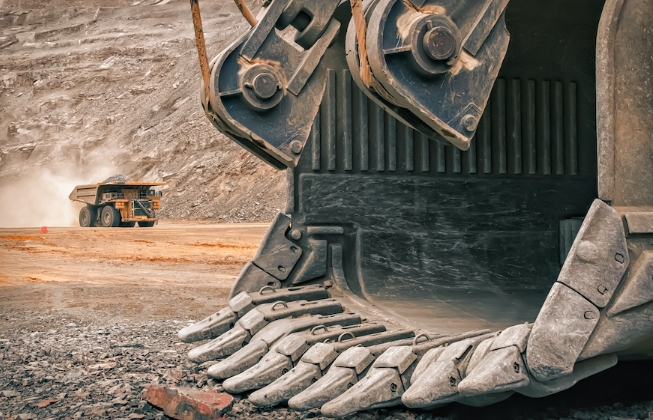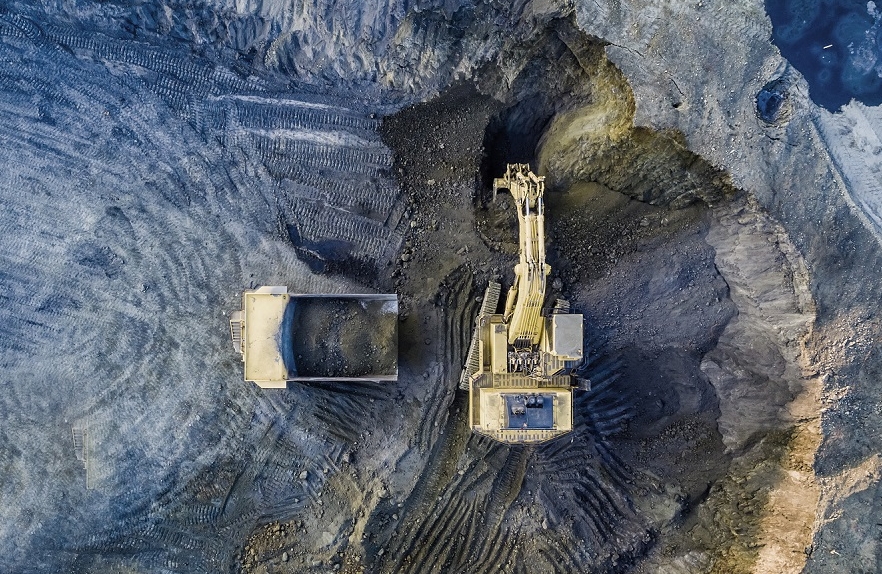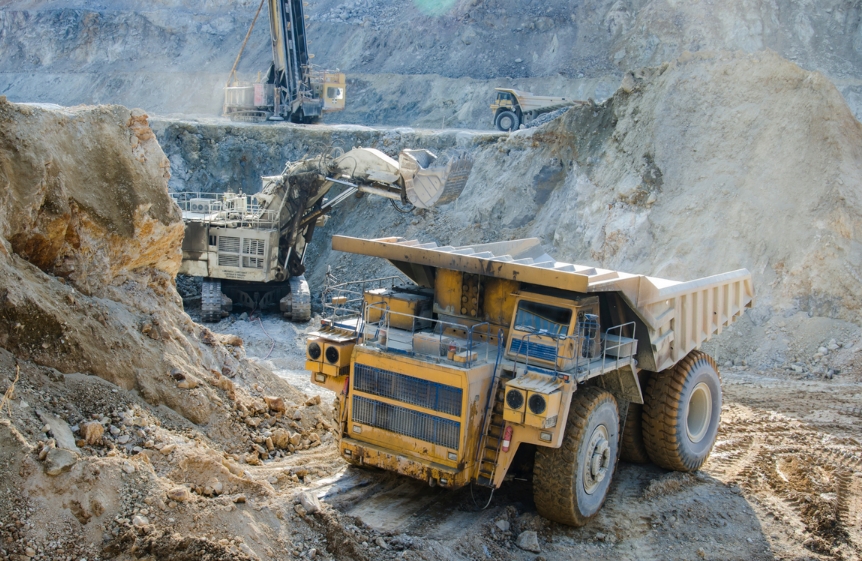In the mining sector, large machinery operates in a highly coordinated manner. A failure in even a single piece of heavy equipment can have a ripple effect on the productivity of the entire fleet, resulting in the potential loss of thousands of dollars per hour.
Due to this collaborative operational structure, we view preventative maintenance as the most suitable strategy for managing mining heavy equipment. By keeping machines in optimal condition, efficiency is upheld, and the occurrences of unplanned downtimes and breakdown-related accidents are minimized.
While preventative maintenance involves several scheduled downtimes, it offers significant cost-saving advantages over the long term. Operating a machine until it fails can result in the deterioration of multiple components, necessitating more frequent servicing, replacements, extended downtime, and ultimately causing production losses.
Recognizing the Significance of Proactive Maintenance
Preventative maintenance holds great significance in mining operations as it anticipates and mitigates potential failures, unlike reactive maintenance which only responds after issues arise.
Furthermore, failures also escalate the potential for accidents. Consider a scenario such as a mining haul truck measuring 25 ft. in width, 85 ft. in length, and 33 ft. in height, equipped with malfunctioning brake discs. Similarly, envision a hydraulic mining shovel experiencing hydraulic oil leakage while carrying a fully loaded bucket with a capacity of 34 cubic meters.
Proactive maintenance anticipates and mitigates these situations. Routine tasks such as daily inspections, lubrication, and comprehensive cleaning of the machinery aid in identifying and averting potentially expensive breakdowns. This approach contributes to the prolonged longevity of the equipment by extending the lifespan of its components.
Scheduled Inspection Routines

Due to the demanding nature of lifting and transporting heavy loads in rugged environments, uneven terrains, and during extended shifts, mining equipment is prone to rapid wear and tear.
Establish a consistent practice of conducting pre-shift inspections. During these checks, carefully examine the equipment for indicators of potential failures, including leakages, dents, cracks, fumes, or excessive vibrations.
When inspecting wheeled equipment such as haul trucks, loaders, and scrapers, be sure to examine the following aspects:
- Tires: Look for deep cuts, abnormal wear patterns, exposed plies, or signs of under-inflation.
- Rims: Check for dents or damage on the rims.
- Wheel Lugs: Ensure that wheel lugs are properly tightened and none are missing.
- Brakes: Look for any signs of brake fluid leakages.
- Brake Performance: Test the brakes by driving the equipment at five mph and then applying the brakes firmly. The vehicle should come to a prompt and straight stop without pulling to the side.
When inspecting tracked equipment like excavators, hydraulic mining shovels, dozers, and drill rigs, ensure to assess the following points:
- Track Shoes/Pads: Look for cracks or any missing track shoes or pads.
- Rollers: Check for dents on the rollers.
- Leaks: Examine the equipment for leaks from rollers or the gearbox.
- Sprocket Teeth: Inspect sprocket teeth for sharpness.
- Track Links: Check for frozen or stiff track links.
- Pins: Ensure all pins are present and accounted for.
- Bushings: Examine bushings for any signs of denting.
- Buckets: Inspect buckets for dents or damage.
Irrespective of the undercarriage type, during pre-operational inspections, pay close attention to the following aspects:
- Fluid Leakages: Look for any indications of fluid leaks around the equipment and from attachments.
- Hydraulic Cylinders: Check for caked dirt on hydraulic cylinders, which can suggest worn-out seals.
- Fluid Levels: Assess the levels of various fluids including engine oil, hydraulic oil, transmission fluid, coolant, brake fluid, and washer fluid.
- Wear and Tear: Examine the condition of bucket teeth or cutting edges for signs of wear and tear.
- Air Filters: Check the air filters for any signs of clogging.
- Oil Filters: Inspect oil filters for leaks, dents, or cracks.
- Fire Suppression System: Evaluate the condition of the fire suppression system.
- Belly Pans: Look for dents on the belly pans.
- Engine Check: Start the engine and observe for excessive vibration and any abnormal smoke or fumes emanating from the exhaust system.
Critical Maintenance Tasks
Upon identifying potential issues, it’s imperative to promptly take corrective action. Tighten any loose wheel lugs or replace any that are missing. Ensure your tires are inflated to the appropriate pressure. Adjust track tension as needed and replace any worn components such as sprockets or rollers. Attend to worn seals and damaged hoses by replacing them, and repair or substitute any compromised hose connections.
Ensure the coolant and washer fluid levels are properly topped up. Adjust the levels of engine, hydraulic, and transmission oils to the appropriate indicators. Replace any oil filters that have sustained damage. Address clogged air filters by either replacing them or using controlled air blowing to clear them.
To addressing issues and necessary repairs, adhering to scheduled maintenance is equally vital. Some crucial maintenance tasks for maintaining peak performance of mining heavy equipment involve fundamental actions like comprehensive cleaning of the machinery and applying lubrication to grease points in order to reduce friction.
Additional critical maintenance activities at designated hour intervals encompass:
- Oil Replacement: Change the oil for the engine, hydraulic system, and transmission.
- Filter Replacement: Replace both oil and air filters.
- Radiator and Coolant: Clean the radiator and renew the coolant fluid.
- Electrical Components: Examine the condition of the horn, lights, backup alarm, and camera.
- Safety Systems: Assess the condition of the ROPS (roll-over protection system).
- Consult the Manual: Refer to the operator or manufacturer manual for a comprehensive list of recommended maintenance activities based on specific hour intervals.
In addition to the previously mentioned tasks, include operator training as a part of your maintenance efforts. A certified and well-trained operator recognizes the significance of routine inspections and scheduled servicing. This expertise ensures proper operation of the mining equipment, effectively reducing wear, tear, and the potential for accidents.

Advantages of Proactive Maintenance for the Long Run
Up to this point, you’ve been introduced to several advantages of applying preventative maintenance to mining equipment. Now, let’s delve further into this concept. To begin, repair expenses are considerably reduced since the focus is primarily on addressing or servicing individual components. When a single part becomes worn out or malfunctions, its impact extends to other interconnected elements. Consequently, without proactive maintenance, you could find yourself dealing with a cascade of multiple repairs and replacements.
Consider the instance of bucket teeth as an illustration. If the bucket teeth or cutting edge are in a worn-out condition, their ability to effectively penetrate the soil diminishes. In order to overcome this issue, the operator might be compelled to exert excessive pressure on the hydraulic pump, thereby subjecting the entire system to undue strain. Alternatively, the operator might resort to propelling the equipment forward to assist the digging process, inadvertently causing untimely wear on the tracks. It’s important to note that both of these practices have a ripple effect on other interconnected components.
Opting to exert extra pressure on the pump, the operator accelerates the wear and potential failure of seals due to heightened pressure levels. This, in turn, leads to the emergence of oil leaks. As these leaks occur, the compromised seals become incapable of preventing debris or dirt from infiltrating the system. Consequently, the performance of the boom weakens as a result.
Conversely, propelling the equipment forward to aid in the digging process impacts the longevity of the tracks. This action accelerates the premature wear of the grouser lugs. When the lugs on a track are of reduced height, they become prone to spinning under load, leading to accelerated deterioration of track shoes. This, in turn, exerts stress on the entire drivetrain.
Secondly, a decrease in repairs and replacement requirements directly translates to enhanced efficiency. Mining equipment that is well-maintained can dedicate more time to profitable production and less time to incurring expenses, which can potentially lead to the idling of other machinery. Thirdly, proactive maintenance plays a significant role in reducing the likelihood of accidents that are often linked to equipment breakdowns.
Consider the illustration of worn-out bucket teeth provided earlier in this section. An overburdened hydraulic system with oil leakage might result in the boom losing power, potentially leading to the accidental release of its load onto nearby equipment or personnel. Similarly, an excavator equipped with worn grouser lugs could experience slipping on wet and steep terrain, potentially colliding with objects or individuals.
Final Thoughts
Proactive maintenance takes a proactive stance against equipment failure. Through consistent inspections, planned servicing, and maintenance activities, the operational lifespan of heavy equipment can be significantly prolonged.
Despite the scheduled periods of maintenance-related downtimes, the undeniable long-term advantages encompass improved performance, enhanced efficiency, increased productivity, greater profitability, and a reduced occurrence of breakdowns and accidents.
We encourage you to boost efficiency and maintain a safe mining environment by adopting regular maintenance schedules and practices. Your mining heavy equipment operator manual has all the information you need.
Forget unplanned downtimes with our high-quality aftermarket parts, from tires and rubber tracks to rollers, idlers, and sprockets.

